14+ Sample Personal Training Contract
-
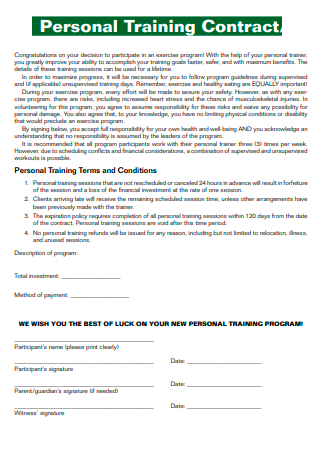
Personal Training Contract Template
download now -
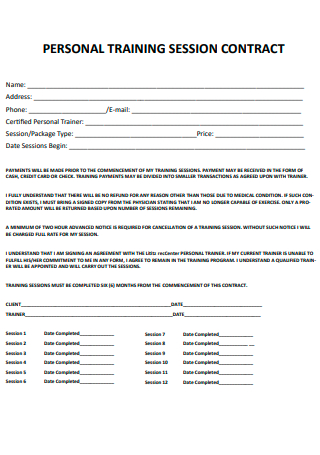
Personal Training Session Contract
download now -
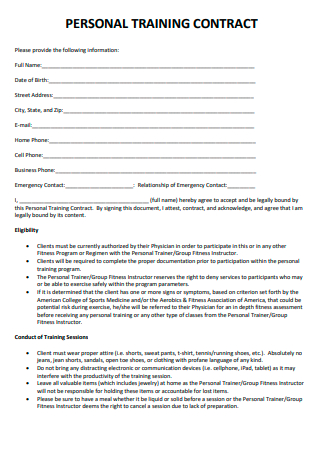
Basic Personal Training Contract
download now -
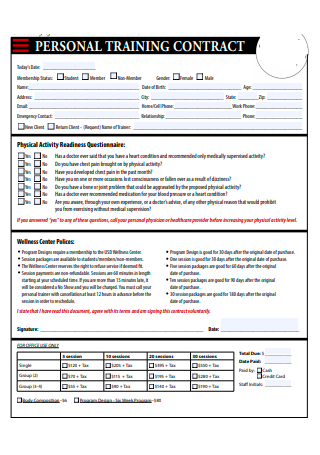
Formal Personal Training Contract
download now -
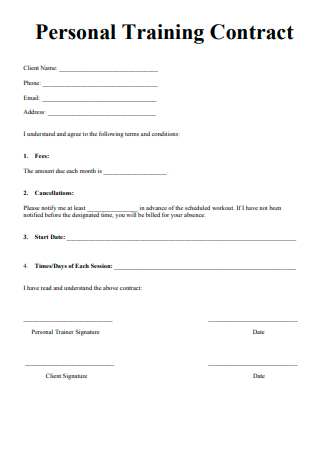
Simple Personal Training Contract
download now -
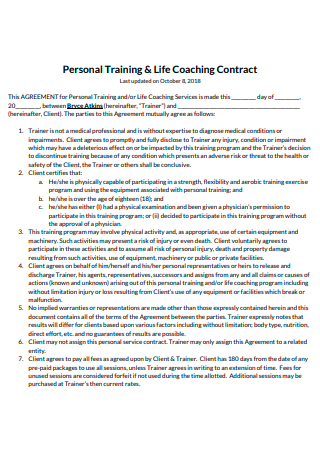
Personal Training and Life Coaching Contract
download now -

Personal Training Contract Example
download now -

Personal Training Purchase Contract
download now -
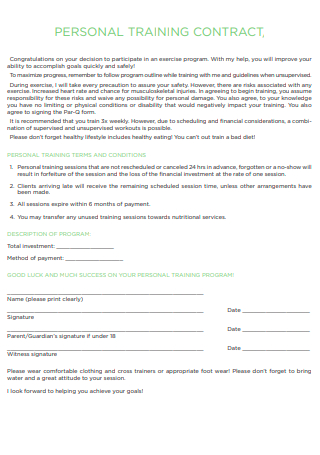
Personal Training Contract in PDF
download now -
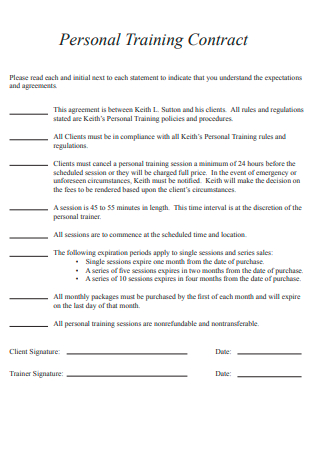
Printable Personal Training Contract
download now -
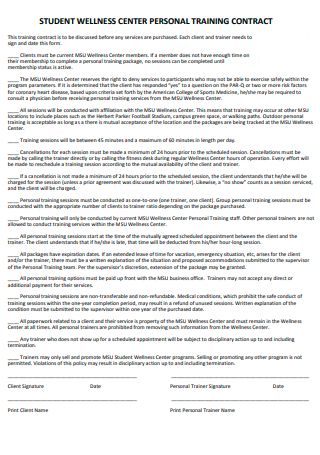
Student Wellness Center Personal Training Contract
download now -
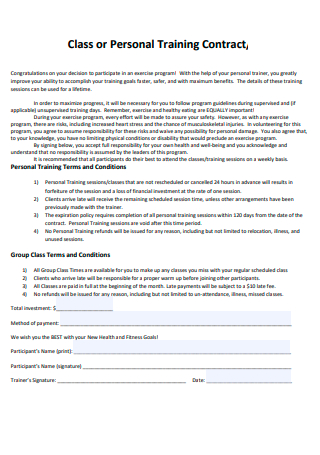
Class or Personal Training Contract
download now -
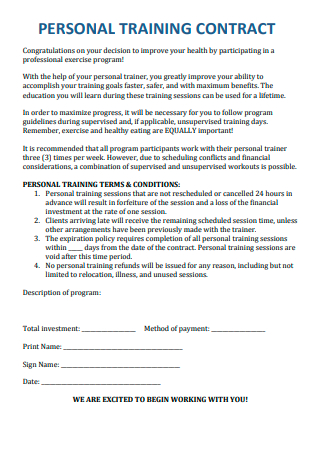
Standard Personal Training Contract
download now -
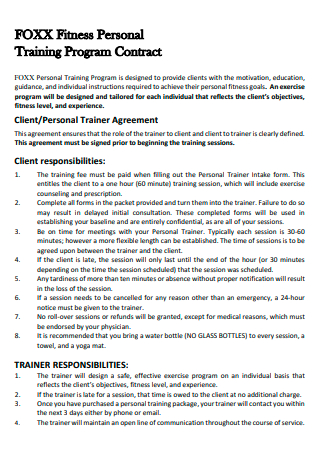
Fitness Personal Training Program Contract
download now -
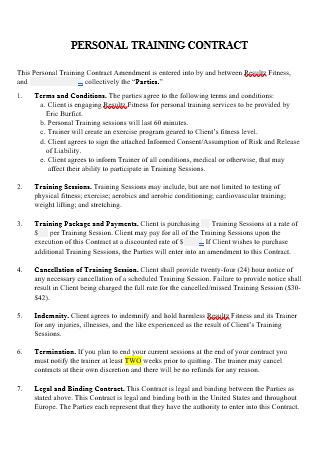
Personal Training Contract in DOC
download now
FREE Personal Training Contract s to Download
14+ Sample Personal Training Contract
What Is a Personal Training Contract?
Benefits of Having a Personal Trainer
Key Components of a Personal Training Contract
How to Create a Personal Training Contract
FAQs
What should be included in a personal training contract?
Do personal trainers need a contract?
What is a contract personal trainer?
What Is a Personal Training Contract?
A personal training contract is a formal agreement made between a trainer and a client. It is a contract that describes the nature of the partnership and outlines the various terms and conditions pertaining to that partnership.
According to an online article by the University of Washington on personal training, there are several ways a personal trainer can help a client. These include customizing a person’s exercise plan, setting fitness or health goals, losing or gaining weight, having monthly conditioning or regular exercise, and training for a specific sport.
Benefits of Having a Personal Trainer
A personal trainer is not only limited to the area of fitness and health. A personal coach can also mean a life coach or a career development mentor. Engaging the services of a personal trainer does have several benefits. Some of these main advantages are described below.
Key Components of a Personal Training Contract
Like any official contract, there can be numerous sections and fine details. When it comes to personal training contracts, there are key sections that should be properly defined and outlined. The following are just some of the core components found in a personal training contract.
How to Create a Personal Training Contract
To create a personal training contract, it would be best to use an existing template as a reference guide. Choose from any one of the downloadable templates above and follow the step-by-step guide below.
Step 1: Introduction of the Parties
The first step in creating any basic contract is to identify the parties involved in the agreement. In the case of a personal training contract, introduce the parties formally by citing the complete names of the trainer and client. In more formal circumstances, you can also include the complete address of each parties. Make sure to clearly assign the terms to the correct party.
Step 2: Roles and Responsibilities of the Parties
The next step is to outline and differentiate the responsibilities of each party. Both client and trainer have obligations to fulfill and that must be stated in the contract agreement. This is to safeguard the partnership and interests of both parties. Without a clear definition of roles, it may potentially lead to unnecessary conflict and disagreements. Lastly, you want to make sure to state each role and function as specific as possible.
Step 3: Outline of the Terms and Conditions
A key part of a personal training contract is the establishment of terms and conditions which both parties must mutually agree on. There can be all kinds of terms and conditions, depending on the type of training provided. Some of the more common and generic conditions included in most contracts involve liability, confidentiality, cancellation of contract, payment guidelines, and description of services offered.
Step 4: Confirmation Statement
To conclude your personal training contract, insert a brief confirmation statement at the end declaring that both parties have agreed to the previously stated stipulations. Doing this will further certify and help authenticate the contract agreement. Make sure to leave enough space for both client and trainer to affix the date and their signature.
FAQs
What should be included in a personal training contract?
Essential parts of a personal training contract include the introduction of parties (i.e., client and trainer), definition of parties’ roles and responsibilities, the various terms and conditions, and a confirmation declaration statement. For ideas on what terms and conditions to include in your contract, see the examples provided above.
Do personal trainers need a contract?
When it comes to engaging the services of personal trainers, a formal contract agreement is highly encouraged. It is not always absolutely necessary, especially if the parties share a particularly close relationship to begin with. However, to make sure to protect the interests of each party, it is advisable to draft a formal agreement to prevent any unnecessary squabbles or disagreements.
What is a contract personal trainer?
A contract personal trainer is hired on a contractual basis. In other words, his or her services are engaged by a client for a certain period of time. When a verbal agreement is made, a written contract agreement is then drafted to document and safeguard the interests of both parties.
There are many benefits to hiring a personal trainer. Sometimes, results and improvement are expedited when there is a trainer, coach, or mentor there to support and monitor the client’s progress. So if you are considering hiring a personal trainer, a key document to remember is the contract agreement. Browse the printable templates above to download a sample contract that suits your needs!
